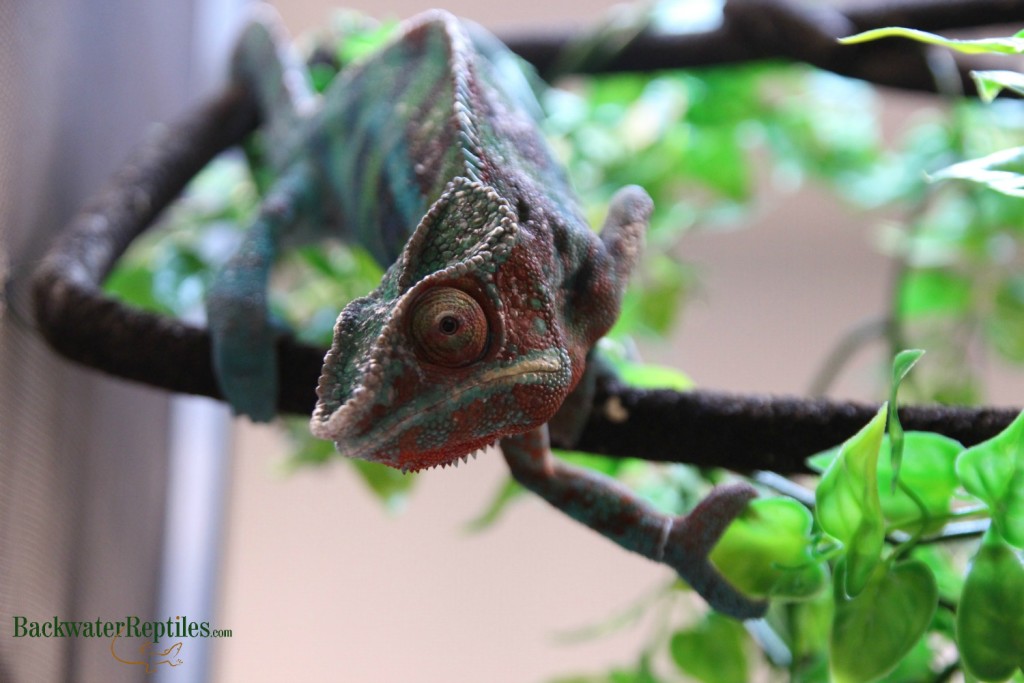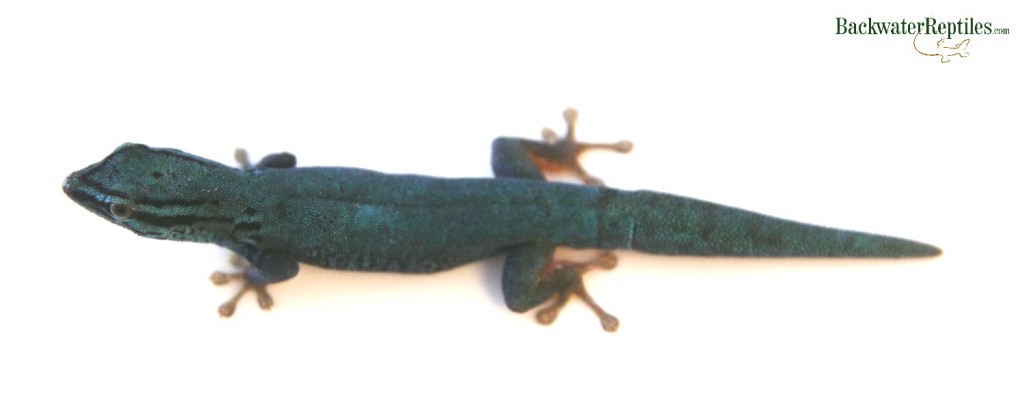It’s no secret that many reptile enthusiasts gravitate to a specific animal because of the its unique physical traits and appearance. Often times, one of the first things we notice is a reptile or amphibian’s coloration because our scaley friends tend to be either dull and flat tones such as brown, tan, or black or brilliant, iridescent shades of green, blue, and even red.
In this article, we’ll describe our top four picks for the most colorful pet lizards and what makes them outstanding pets aside from their beauty.
Jeweled Lacerta (Lacerta lepida)
Also known as the ocellated lizard, the jeweled lacerta is a bright green lizard with bold, blue “eyes” or dots lining its back in a rosette pattern. These spots are not only pretty – they serve to reflect UV spectrum light. Both genders will be brightly colored, but males will be more vibrant and have much larger heads than the females.

For their size, lacertas are actually fairly light-weight lizards with somewhat slender builds. Despite their long tails, toes, and limbs, lacertas don’t tend to grow larger than two feet long. Females are smaller than males and will generally max out at around 20 inches long.
Jeweled lacertas are active, diurnal lizards. This means that you will not only require a fairly large enclosure for your lacerta, but plenty of UV and heat lighting for them to bask. A good rule of thumb is to provide a tank that is at least twice the length of your lizard, so if your lacerta is two feet long at maturity, it will do best in an enclosure that is at least four feet long.
We’ve found that jeweled lacertas are highly food-motivated animals. Although they’re not necessarily known for their docility, if you teach them to associate you with feeding time and positive interactions, your lacerta will become quite happy to interact with you.
Panther Chameleon (Furcifer pardalis)
Chameleons in general are known for their somewhat tricky care requirements, but luckily, panther chameleons are pretty adaptive when it comes to being pets. They breed well in captivity, so the animals that are available today are usually not from the wild, which makes them healthy and free of parasites with the added benefit of being used to people.

Because they can change color, panthers will express an array of complexions over their lifetime. Your pet panther chameleon can alternate from bright red to stunning blue and will pretty much always have some type of different color striping coupled with contrasting white markings. The teal, coral, and green colors produced by panther chameleons are extremely impressive.
Williams Blue Cave Gecko (Lygodactylus williamsi)
Williams blue cave geckos might be tiny in size, but they definitely pack a punch when it comes to the color department. Male Williams geckos are a dazzling, neon blue color with contrasting dark accent stripes. Females are an equally neon green with striped markings as well, but their stripes tend to be lighter in color.

These geckos are actually dwarf geckos. Even the larger males usually don’t surpass two and a half inches long at maturity. They don’t require a lot of space, but because they are arboreal by nature, you’ll need to make sure that their home is tall with plenty of climbing equipment and hiding spaces.
The small size of the Williams blue cave gecko also means they eat small food. At Backwater Reptiles, we feed ours a staple diet of pinhead crickets and fruit flies.
Emerald Swift (Sceloporus malachiticus)
We love it when an animal’s name reflects one of its traits. This is definitely true of the emerald swift. This lizard is both speedy and green! Actually, swifts are a combination of blue and green. Usually, their throats, underbellies, and tails are blue, while their backs and limbs are green or teal.
Emerald swifts are not aggressive lizards, but as their name suggests, they are quick and nimble, which means that they’re not the best pets for someone who wants to be hands on with their lizard. Your swift most likely won’t bite, but it probably will squirm a lot and try to get away, which could stress the animal more than necessary.

Insects such as crickets, roaches, mealworms, and reptiworms are the go-to food for this carnivorous lizard. They will consume pretty much any insect, but they have been known to suffer from calcium deficiencies in captivity, so be sure that whatever invertebrate you select as dinner gets dusted with calcium powder at least every other feeding session.
Conclusion – The Most Colorful Pet Lizards
While some of the colorful pet lizards on our list are better at being seen than being handled, we still feel they all make equally fulfilling captive reptiles.
What’s your favorite colorful pet lizard? Let us know in the comments!
